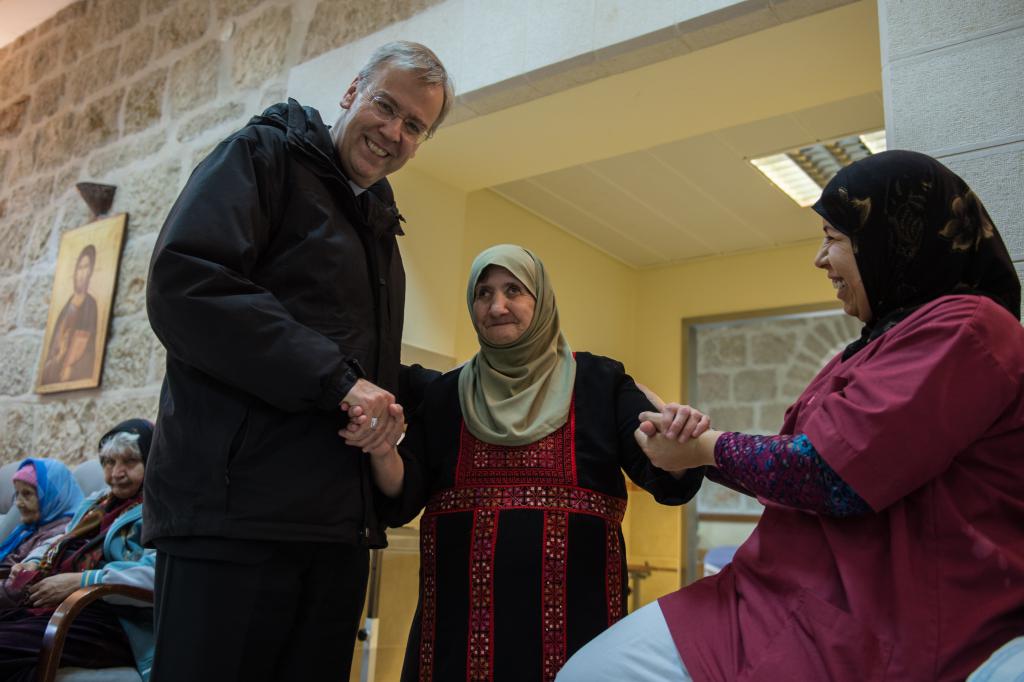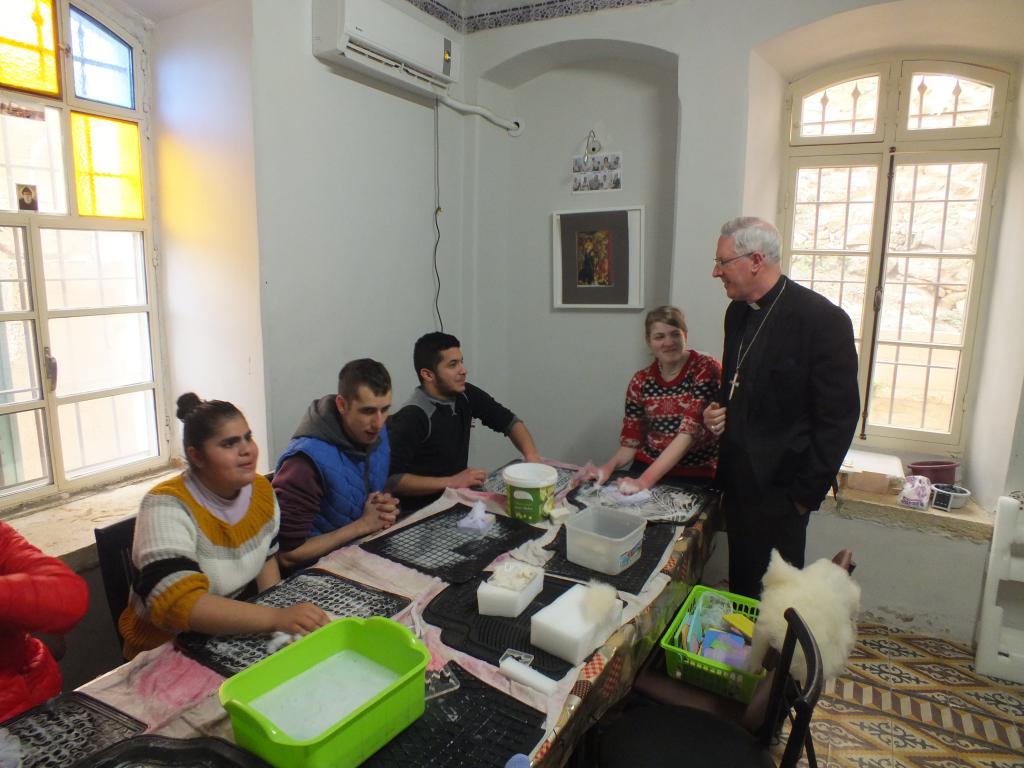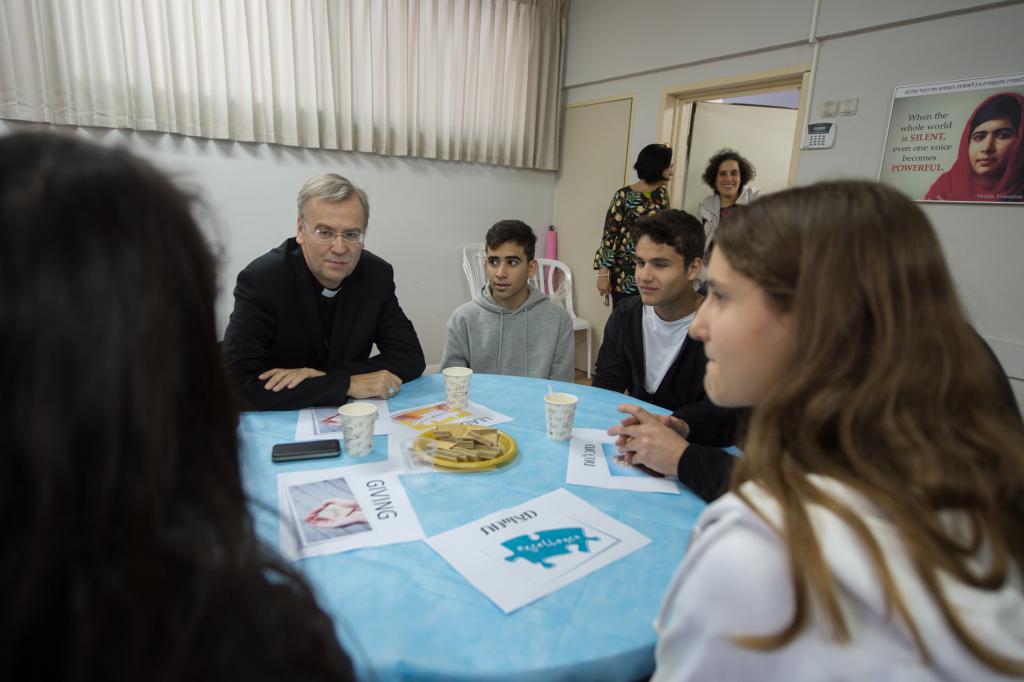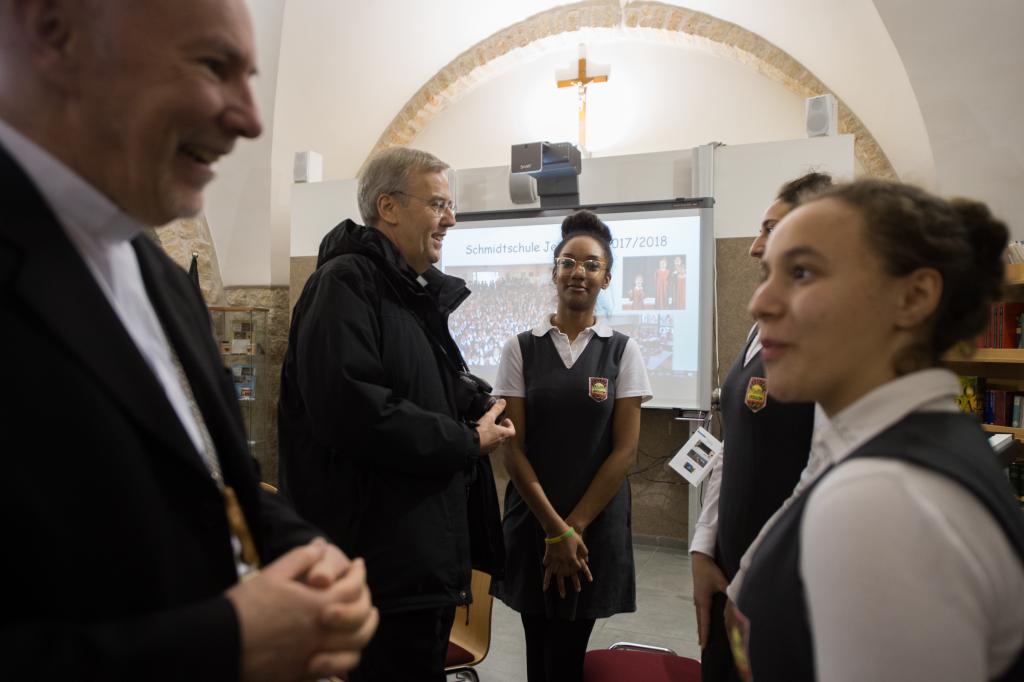by Bishop Nicholas Hudson
The Sisters told us they found a poor woman with learning disabilities chained up and living in a cave at the end of the family garden. In her they recognized Christ, they said; and gave her a home. She was one of many whom they had discovered and to whom they had given refuge. This was in Emmaus, the place where Cleopas and the other disciple had recognised him in the breaking of the bread.
I was visiting Al-Qubeibeh (Emmaus) as part of a group called the Holy Land Coordination. The Holy Land Coordination is a group of bishops from Europe, North America and South Africa which has been travelling to the Holy Land every year since the 1990s. We go to give solidarity to the beleaguered peoples of Palestine. The focus of our trip this year was youth and education. An additional dimension which we had not anticipated was to be given insight as well into the plight of people with disabilities. The Sisters' discovery of many people abandoned on account of their learning disability brought home to us the reality that, in a society which is on its knees, those with learning disabilities are often the poorest of the poor.

In the blockaded territory of Gaza we met Missionaries of Charity who have welcomed a large number of children with learning disabilities. All the children are Muslim, many with severe disabilities: in these children the Sisters will tell you they recognize Christ. Many of the children are severely disabled and yet we found among them a joy which seemed to reflect the joy in the hearts of the Sisters who welcome them. The presence of these Catholic Sisters is prophetic in this enclave where the population is two million but the Christian population just 1,000 and the number of Catholics a mere 150.
Something of the same prophetic witness and joy we found in L'Arche Bethlehem which welcomes young adults with learning disabilities in a house just yards from the birthplace of Jesus. This L'Arche community is named Ma'an lil-Hayat which means ‘Together for Life’. Ma'an lil-Hayat welcomes both Muslims and Christians; and the leadership is also both Muslim and Christian. This community witnesses deliberately and radically to the need for Christians and Muslims of the Holy Land to recognize God in their neighbour regardless of whether he or she is Christian or Muslim and most especially in the poorest of the poor.

This need to recognize our shared humanity turned out to be a recurring theme of our visit. For we had come to meet young people on either side of the Israeli/Palestinian divide to find out what they thought of one another and how they viewed the prospects for peace. We met Law undergraduates at the Hebrew University in Jerusalem, older than British undergraduates since they had all undergone 30 months’ military service before embarking on their studies. We were welcomed to a Jewish secondary school in a Jerusalem suburb to sit at round-tables with Sixth Formers. We had lunch with Catholic seminarians in Bethlehem, all Palestinian/Jordanian. We met younger children in a Palestinian school.

What struck us in these conversations was how little the young people knew about each other. Both Israeli and Palestinian youth would tell us repeatedly that they know hardly any young people belonging to ‘the other side’. They told us that, ‘Even when you go away on Israeli/Palestinian camps, you return and nothing has changed.’ They spoke often of their fear of the other. Fear and a lack of hope in the peace process punctuated all their conversations. They seemed far from recognizing the other as their brother or sister, let alone recognizing God in the other.
Yet we did discover oases of recognition. We met young people from the Parents' Circle Families Forum, a group of some 600 families, of whom 300 are Palestinian, 300 Israeli, who have lost a close relative in the troubles which have plagued the Holy Land in recent decades. We heard the testimony of two young men, one Israeli, one Palestinian, each of whom had lost a teenage sister and yet were working for resolution not escalation of the conflict. Here we met young people who did recognize the other as their brother/their sister in God.
Another oasis was the Schmidt School close by the Damascus Gate, where the ethos is radically intercultural, interfaith. Muslims and Christians study alongside one another to learn about each other's culture and faith and also about the Jewish faith and culture. They all speak Hebrew as well as German, English, French and other languages. Their yearning for peace was given poignant expression when the girls sang for us, Muslim and Christian 15-year-olds standing alongside one another in harmony, to sing with fervour Dona nobis pacem, ‘Give us peace’. There was scarcely a dry eye among the bishops.

As we came away from the Schmidt School, the words of one bishop in particular returned to me with force: ‘I just hope all these young people we're meeting,’ he had said, ‘never experience any violence. I pray God keeps them safe.’ He was speaking for every one of us. I left the Holy Land my heart filled with the recollection of so many rich encounters, the meeting with so many fine young people. My heart burned with the memory above all of the young women who sang so ardently for peace. My prayer was that the One whom Cleopas and the other disciple had met on the road to Al-Qubeibeh would come to meet each one of those young people on their journey into adulthood and give them hearts which burn too for peace and truth and reconciliation in the land of his birth and dying and rising.
Main photo: Bishop Nicholas celebrates Mass in the Church of Cleopas in Emmaus


